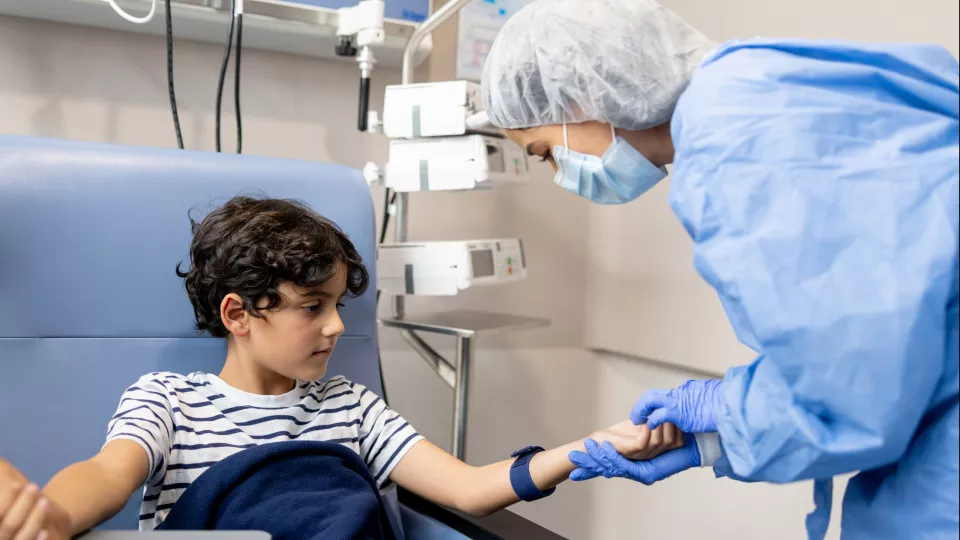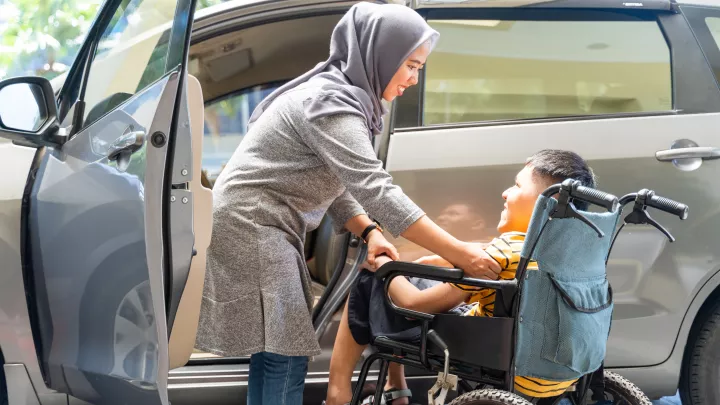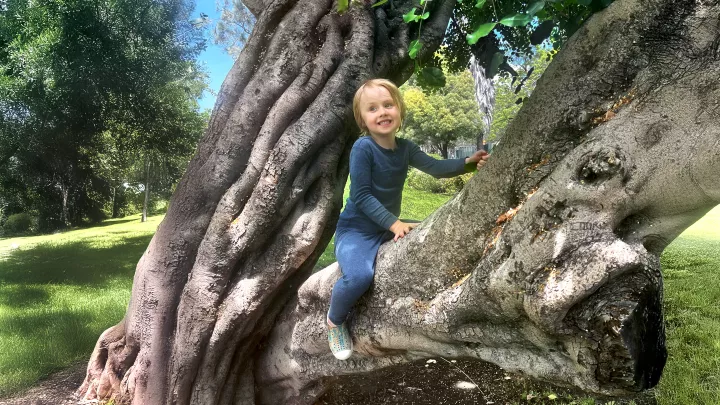
Elevidys Gene Therapy: A Neurologist’s Perspective
Over the past year, Children’s Hospital Los Angeles has been one of the highest-volume centers in the nation for Elevidys gene therapy. So far, CHLA has treated 10 boys with Duchenne muscular dystrophy with this gene transfer therapy—among the most in the U.S.
Leading these efforts at CHLA is Leigh Ramos-Platt, MD, Director of the Neuromuscular Disorders Center in the Neurological Institute at Children’s Hospital Los Angeles, which includes one of the largest programs in California for Duchenne.
Dr. Ramos-Platt has been providing gene therapies for pediatric neuromuscular conditions since 2019. She shares her experience of administering Elevidys, what side effects can happen in the days and weeks after the infusion—and why gene therapy care goes far beyond the infusion.
How does Elevidys work?

Elevidys is given as a one-time outpatient infusion. It delivers a gene that produces microdystrophin, a shortened version of the normal dystrophin protein that is missing in boys with Duchenne. This microdystrophin production is designed to slow disease progression and help protect muscles from degenerating.
Like some other gene therapies, Elevidys is delivered into muscle cells via an adeno-associated viral vector. The vector it uses is called AAVrh74.
There’s a common misconception among many physicians that this therapy is still experimental, but it is not. It is approved by the Food and Drug Administration for boys 4 and older with Duchenne.
What have you been seeing in your patients so far?
We have seen excellent results in our patients, which is very exciting. But it’s important to note that this is not a cure, and we don’t know the duration of the therapy’s effects. The first four boys to receive this gene therapy are now seven years out, and the therapy seems to be holding for them. However, when a patient gets gene transfer therapy for Duchenne, that patient will still have muscular dystrophy. What we hope is that they will have a lesser version of it.
And while this is the first FDA-approved gene therapy for Duchenne, it’s possible we could have a new and better gene therapy in two to five years. That said, many of our patients, especially those who are hoping to preserve their ability to walk, cannot wait that long. In my view this is currently the best treatment available.
What do you look for when screening patients?
The screening process is extremely thorough. Gene therapy is a lot like getting an organ transplant. We’re giving the body something that is foreign—in this case, a gene. And when the body sees something foreign, its first reaction is to attack.
So we have to screen patients very carefully. There are many components involved, but two of the major organs we evaluate are the liver and heart. Those are two organs where side effects can show up.
We also look at compliance. If a family has a history of not keeping follow-up appointments, for example, then they are not a good candidate for gene therapy. Because it would be very dangerous. The follow-up appointments are critical to the safety and success of this treatment.
What happens after the infusion? What side effects do you watch for?
Almost all patients are going to throw up for the first couple of days after the infusion. That is because of the virus used to carry the gene. We also watch for liver injury, which again can happen because of the virus.
The secondary side effects come a little later, when the body starts making the microdystrophin. Making microdystrophin is the thing that can help patients see muscle improvements. But because that protein is designed to be made in the skeletal muscle and the heart, there is also a risk of immune-mediated myositis and myocarditis. Those side effects aren’t common, but they can happen. We monitor patients very closely so we can intervene at the first sign of a problem.
I tell families, when you get gene therapy, you become our team’s best friend. Because we will see them at least once a week for the next 12 to 16 weeks.
Are myositis and myocarditis events reversible?
So far, the data has shown that all patients with heart side effects have recovered. However, not all patients who developed myositis have recovered.
I tell parents there is a chance that if their child develops myositis, they may end up being weaker after treatment than right before it.
What makes CHLA an ideal place to administer gene therapy?
Experience is critical. Our Neuromuscular team has been giving gene therapies since 2019. Children’s Hospital Los Angeles is a national leader in this space and is approved to administer nine different FDA-approved gene therapies for children.
That’s important because gene therapies are extremely complex. To give them safely requires a comprehensive multidisciplinary team. At CHLA, in addition to our neurologists, we have pediatric cardiologists, hepatologists, and hematologists who have experience caring for gene therapy patients. We also have highly skilled and seasoned nurses in our Infusion Center.
Gene therapy is an incredibly exciting advance for children with Duchenne and their families. But it is so much more than one infusion. You really need that entire experienced team working together to ensure the best outcomes for these patients.


